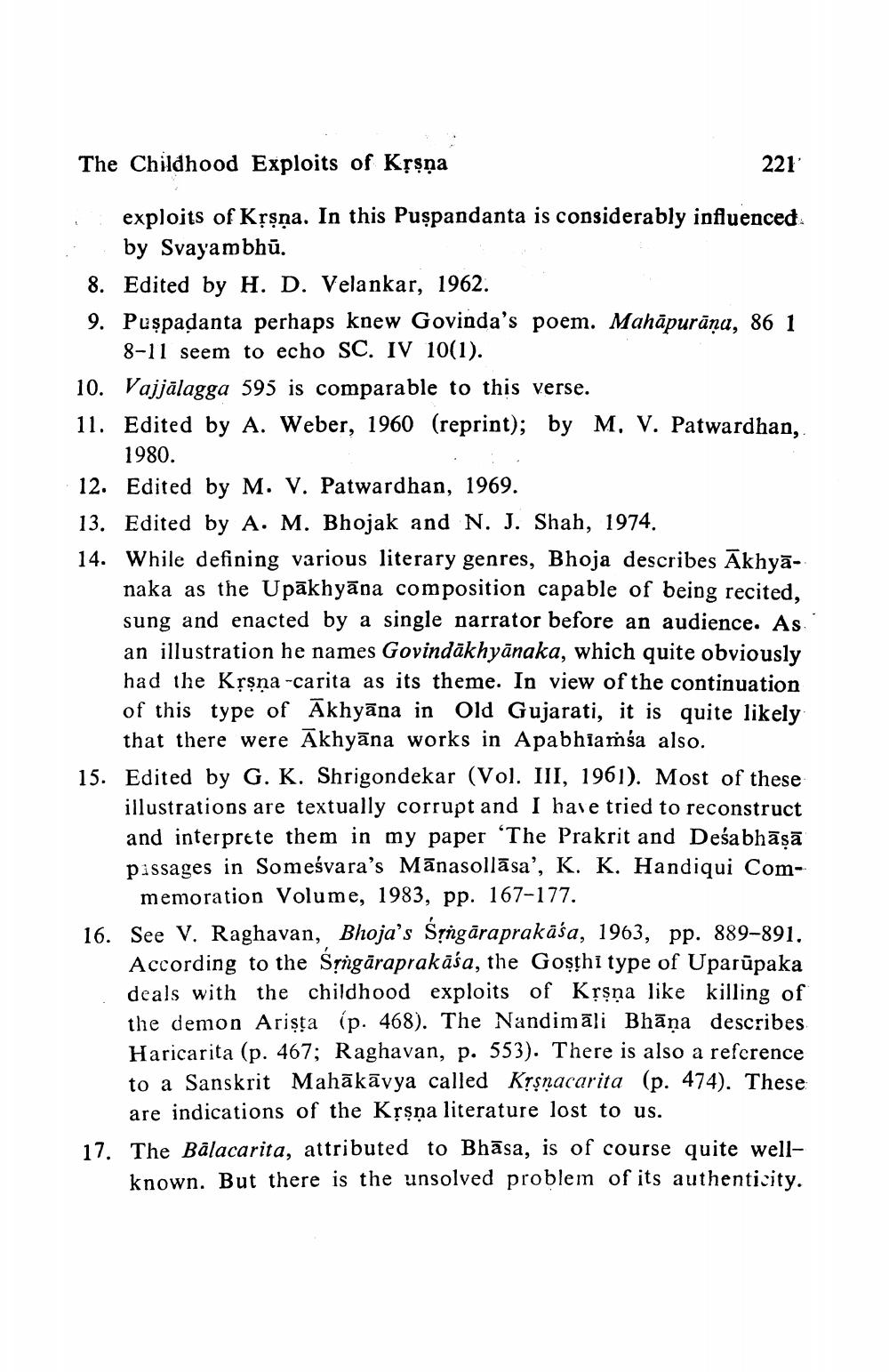________________
The Childhood Exploits of Krşņa
221
i exploits of Krşņa. In this Puspandanta is considerably influenced
by Svayambhū. 8. Edited by H. D. Velankar, 1962. 9. Puşpadanta perhaps knew Govinda's poem. Mahāpurāņu, 86 1
8-11 seem to echo SC. IV 10(1). 10. Vajjālagga 595 is comparable to this verse. 11. Edited by A. Weber, 1960 (reprint); by M. V. Patwardhan,
1980. 12. Edited by M. V. Patwardhan, 1969. 13. Edited by A. M. Bhojak and N. J. Shah, 1974. 14. While defining various literary genres, Bhoja describes ākhyā
naka as the Upākhyāna composition capable of being recited, sung and enacted by a single narrator before an audience. As an illustration he names Govindākhyānaka, which quite obviously had the Kțşņa -carita as its theme. In view of the continuation of this type of Ākhyāna in Old Gujarati, it is quite likely
that there were Ākhyāna works in Apabhiamsa also. 15. Edited by G. K. Shrigondekar (Vol. III, 1961). Most of these
illustrations are textually corrupt and I have tried to reconstruct and interprete them in my paper ‘The Prakrit and Deśabhāsā pissages in Someśvara's Mānasollāsa’, K. K. Handiqui Com
memoration Volume, 1983, pp. 167-177. 16. See V. Raghavan, Bhoja's Sțngāraprakāśa, 1963, pp. 889-891.
According to the Sțigăraprakāśa, the Gosphi type of Uparūpaka deals with the childhood exploits of Krşņa like killing of the demon Arista (p. 468). The Nandimāļi Bhāṇa describes Haricarita (p. 467; Raghavan, p. 553). There is also a reference to a Sanskrit Mahākāvya called Kệsnacarita (p. 474). These
are indications of the Kışņa literature lost to us. 17. The Bālacarita, attributed to Bhāsa, is of course quite well
known. But there is the unsolved problem of its authenticity.




